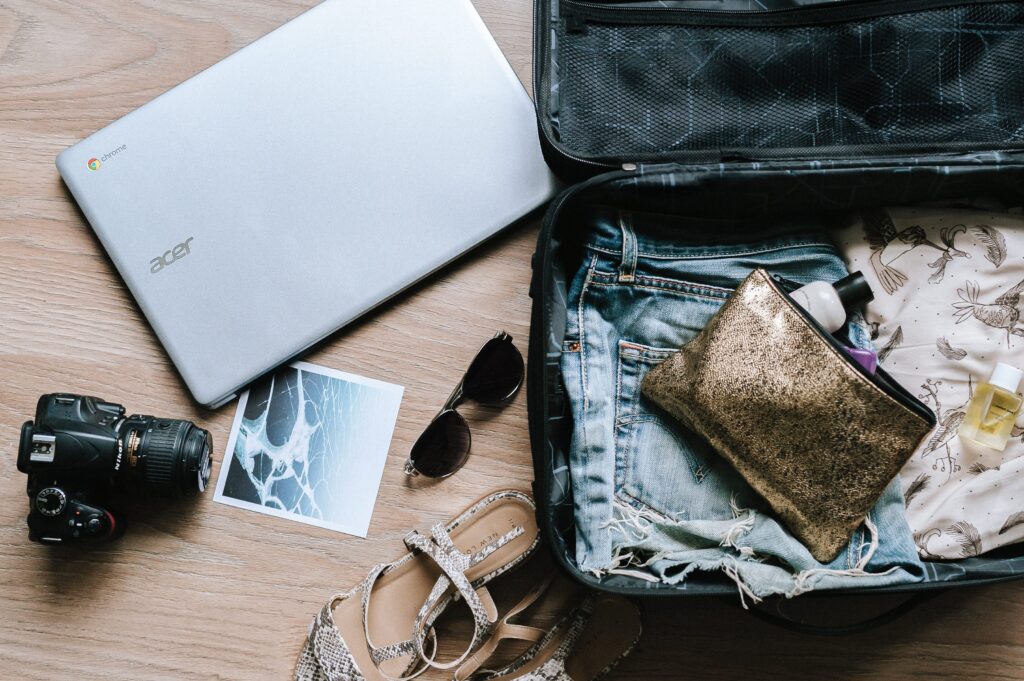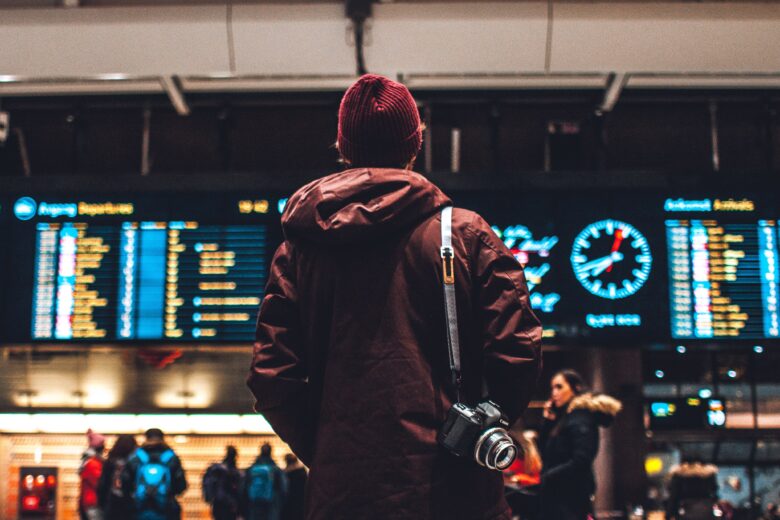Planning your first solo travel adventure? Traveling alone can be unnerving if you’ve never done it before, but it doesn’t have to be. By following these tips for first time solo travelers, you’ll be prepared and confident on your adventure.
I’ve been traveling alone for 15 years now and I’ve learned a lot. About myself, the world and the amazing people that I’ve had the privilege of crossing paths with. In the earliest days of my solo travel experiences, I made a lot of mistakes. I was naïve as hell at 21, even though I thought I knew it all.
Since then, I’ve visited more than 30 countries around the globe, many of them on my own, and not only have survived to tell the stories, but have picked up a great deal of wisdom on what (and what not) to do when traveling alone. Sure, going at it on your own can be scary for the first time solo traveler, but it doesn’t have to be. Read on for my top tips for your first solo travel journey.
Pick the right destination for you.
Some destinations are better for first time solo travel than others. To make your first adventure alone most comfortable, consider picking a destination that has a well-developed tourism industry and is accustomed to foreign visitors. These places are typically more convenient for first-time solo travelers to navigate and you’ll stand out less.
You should also consider the local language of the destination you’re visiting. While it’s completely possible to have amazing experiences in places where you can’t verbally communicate with the locals, you’ll likely feel more relaxed on your first solo trip if there’s no language barrier. English-speaking countries like Ireland, England, Australia and New Zealand are perfect for the first-time solo traveler wanting to abroad.
That said, many destinations that aren’t necessarily English-speaking, but you can still get along just fine without knowing the language. Some of these include parts of Mexico, Portugal, Austria, South Korea and Japan.
Safety-first solo travel
Taking the proper steps before you set off can help to ensure that you’re safe and sound during your solo travel adventure, and can help you avoid unnecessary stress.
I strongly recommend purchasing travelers’ insurance before you depart. (I wrote a whole blog post why — including a crazy time it came in handy for me!) Even if you’re insured at home, your plan will not cover you while you’re overseas. Travelers insurance covers theft, unexpected trip interruptions as well as injury and sickness abroad; trust me – it’s come in handy for me multiple times. Better safe than sorry!
Currently, I’m using Safety Wing’s Nomad Insurance while living and traveling in Mexico. It’s super easy to sign up and costs only $40 a month. (Policy costs may vary depending on your age.) It covers just about everything – including COVID-related illness. I consider this to be a steal for the peace of mind it offers. (I’ve already had to make two trips to the doc!)
I’ve also used World Nomads in the past, and had a good experience with them when I was hospitalized with E. Coli poisoning in India. Do note, World Nomads is more expensive, but has an option that has move coverage if you’re looking to engage in more high-risk activities like extreme sports.
Whenever I travel, even if it’s locally, I provide my travel itinerary – including flight information, contact information of the hotel where I’m staying and any tours I plan on taking (with links) – to my family members and trusted contacts. Similarly, I make sure they have a way to get in touch with me. I always get a local SIM card and purchase data (ahead of time, if possible) and provide them with that number. As a backup, I use a Google Voice number, too.
Pack light.
Packing light and taking only what you need is going to help you feel much more comfortable on your first solo travel trip. Less luggage means less hassle, and you’ll also be able to better keep an eye on your surroundings and your belongings. A tourist with loads of luggage is also a target for thieves.
Even if I’m traveling for a month, I always try to consolidate my belongings into a single carry-on suitcase. (This one, to be precise. It’s got a place for everything… I wouldn’t leave home without it!) I also bring along an empty backpack (which counts as a personal item) which can be used to carry anything I pick up along the way, like souvenirs or snacks.

Stay at a hostel.
Don’t let those creepy horror movies keep you from experiencing the potential joys of hostels. Admittedly, I don’t stay in hostels as much as I used to, but I spent my 20s in and out of them as I traveled the world. Some of my best solo travel memories were made in them.
Featuring many common spaces – some even have their own bars, game rooms and even organized events – hostels are a great way to meet people (especially other solo travelers) when traveling. Folks who stay in hostels are usually very open to going out and exploring the city or taking day trips.
I once met a girl at a hostel in Sevilla, Spain, who ended up tagging along with me to Morocco, where we explored the souks of the city and went camping in the Sahara. I still keep up with her, as well as many of the friends I met in hostels through social media. It’s so cool to see what they’re up to nowadays, even though we may have only hung out a short time together.
Oh, and if you’re not into the whole dormitory thing, know that many hostels offer private rooms with en-suite bathrooms. By staying at a hostel like this, you can enjoy your privacy while still having the opportunity to make friends.
Map out your solo travel journey before you leave.
One thing I always do when visiting a new place – especially when traveling alone – is map out the places I’m most interested in visiting using My Maps on Google. Adding your place of accommodation, museums, restaurants and other sites to the map helps you to better plan your trip and save time, as you can visualize which places are closest to one another. It also helps you to familiarize yourself with the layout of your destination so you’ll be better oriented upon your arrival.
If possible, plan your trip so that you arrive at your destination during the day.
Navigating your way from the airport or bus station to your accommodation is much less intimidating to do during the day. That’s because you can see where you’re going, there are more people out and shops are open so you can ask for directions.
It’s also a good idea to plan the logistics of your arrival before you depart. It’s usually fairly easy to Google the best way to get to your accommodation – whether it’s by public transportation, taxi or Uber. If you must use a taxi, book an official one at the airport. Never get into an unmarked taxi.
Observe your surroundings.
People watching is always fun, but when traveling, you can also learn from it. When having breakfast at a café or resting at a park, take a moment to look around and see what people are doing and how they’re going about their day.
By noting the little details, you can pick up on how to use public transportation, where to pay your bill, how to hail a taxi, and whether you’re expected to join a queue or simply jump in.

Carry candy or playing cards to share with a stranger.
You never know when you’ll have the opportunity to create a special moment with a stranger. Perhaps you’ll get lucky to sit next to an elder with an amazing story on the train, or a potential new travel buddy at a café.
Consider carrying along with you some candy from your home or a pack of cards. They make great ice breakers to strike up a conversation and their appeal is universal.
Take a free tour.
Once you arrive at your destination, consider taking a free (or “pay what you’d like”) tour, such as those provided by Free Tours by Foot and Free Tour.
Usually offered in most major cities and tourist destinations around the world, these tours are great for getting oriented. Once you’ve walked through an area with a local guide, you’ll feel more confident about exploring it on your own. I’ve also done great paid walking tours through Airbnb Experiences, which feature local guides and tend to be less touristic.
Finally, it may seem touristy, but those big red City Sightseeing bus tours are also great for familiarizing yourself with the city. Even if you’re not hopping on and off, you might still consider riding the entire loop so you know where the key points of interest are in relation to one another – and your accommodation.
Leave your expectations at home for optimal solo travel.
Solo travel requires that you leave behind your usual safety crutches and get out your comfort zone, but it also opens up all kinds of opportunities that you might not have when traveling with a friend or family member. It also creates more room for spontaneity.
Adventure and exciting memories are sure to unfold if you keep a positive attitude and are open to the possibilities of a solo trip. To best enjoy the experience, embark on your journey with an open mind and zero expectations. You’ve got this! Now, bon voyage!
While you’re planning your first solo trip, why don’t you check out my list of top travel apps for solo travelers to make your trip more convenient, social and safe?




